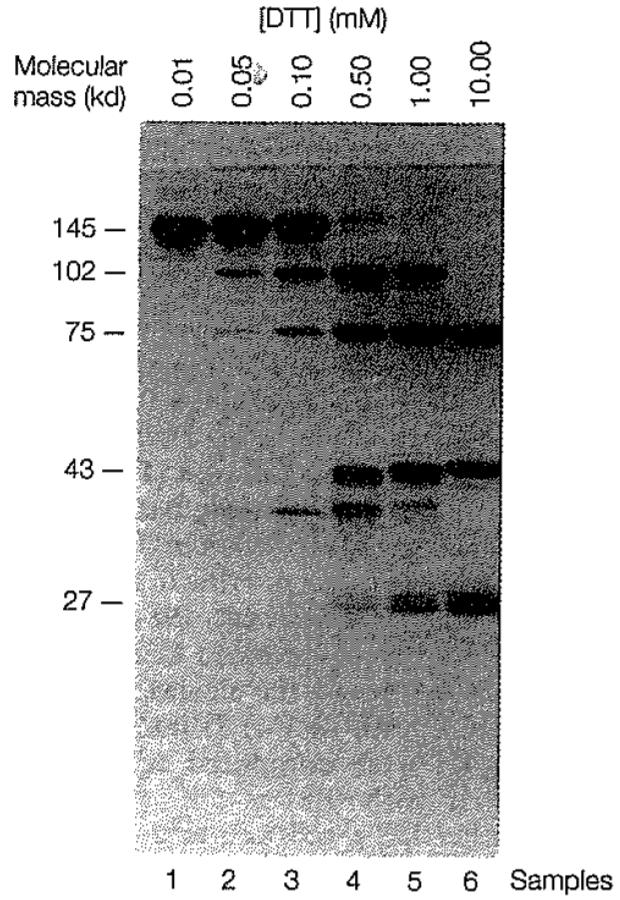Answered step by step
Verified Expert Solution
Question
1 Approved Answer
This experiment was designed to analyze the structure of a component (C3 protein) of the complement system, which is involved in the immune response



This experiment was designed to analyze the structure of a component (C3 protein) of the complement system, which is involved in the immune response against microorganisms. Purified C3c protein (molecular mass: 145kd) was incubated in the presence of various concentrations of the reducing agent dithiothreitol (DTT) and then subjected to electrophoresis in sodium dodecyl sulfate (SDS) polyacrylamide gel. SDS disrupts noncovalent bonds and polypeptides are separated by size during electrophoresis. The gel was stained with coomassie brilliant blue, a protein-dye. The figure shows the molecular masses of intermediates and products generated by DTT treatment. Molecular mass (kd) 145 102 - - 75- 43- - 27- [DTT] (MM) 1.00 10.00 1 2 3 4 5 6 Samples Questions: 1. How many polypeptides are present in C3c? Determine their molecular masses from the figure. 2. What was the purpose of using DTI in this experiment? 3. What kind of bonds hold the polypeptides together? 4. How is the 102kd polypeptide related to the other polypeptide species? This experiment was designed to analyze the structure of a component (C3 protein) of the complement system, which is involved in the immune response against microorganisms. Purified C3c protein (molecular mass: 145kd) was incubated in the presence of various concentrations of the reducing agent dithiothreitol (DTT) and then subjected to electrophoresis in sodium dodecyl sulfate (SDS) polyacrylamide gel. SDS disrupts noncovalent bonds and polypeptides are separated by size during electrophoresis. The gel was stained with coomassie brilliant blue, a protein-dye. The figure shows the molecular masses of intermediates and products generated by DIT treatment. Molecular mass (kd) 145 102 - - 75- 43- - 27- [DTT] (MM) 1.00 10.00 1 2 3 4 5 6 Samples Questions: 1. How many polypeptides are present in C3c? Determine their molecular masses from the figure. 2. What was the purpose of using DTT in this experiment? 3. What kind of bonds hold the polypeptides together? 4. How is the 102kd polypeptide related to the other polypeptide species?
Step by Step Solution
★★★★★
3.41 Rating (154 Votes )
There are 3 Steps involved in it
Step: 1

Get Instant Access to Expert-Tailored Solutions
See step-by-step solutions with expert insights and AI powered tools for academic success
Step: 2

Step: 3

Ace Your Homework with AI
Get the answers you need in no time with our AI-driven, step-by-step assistance
Get Started


